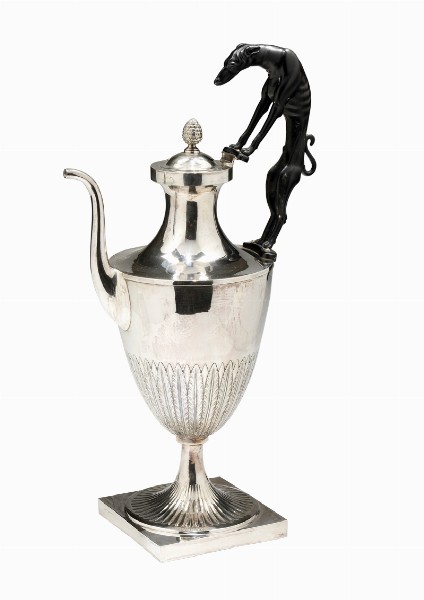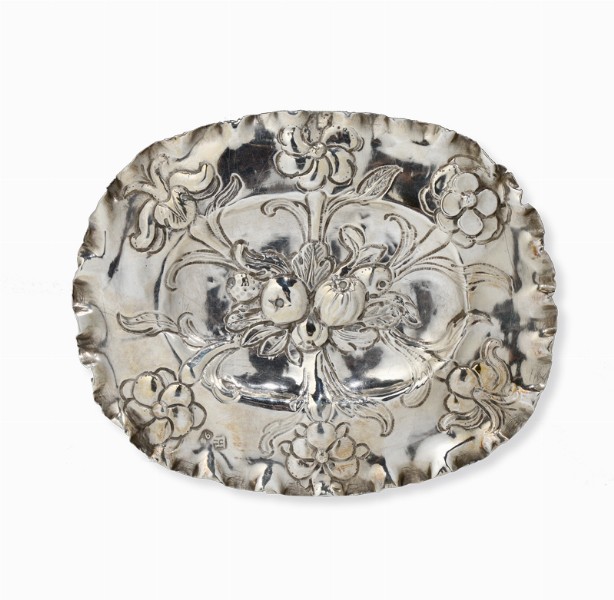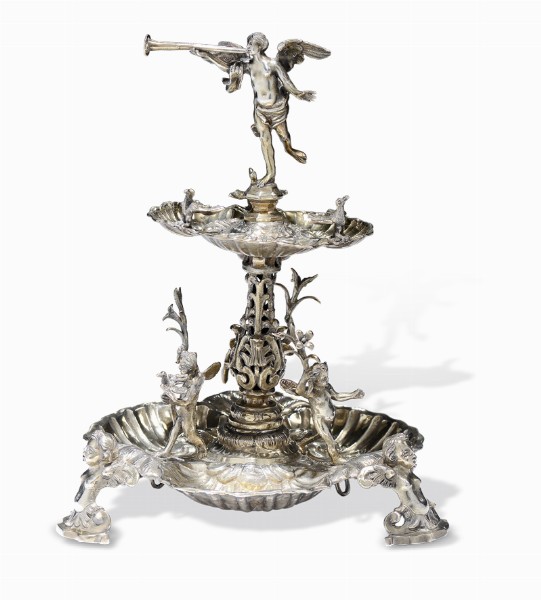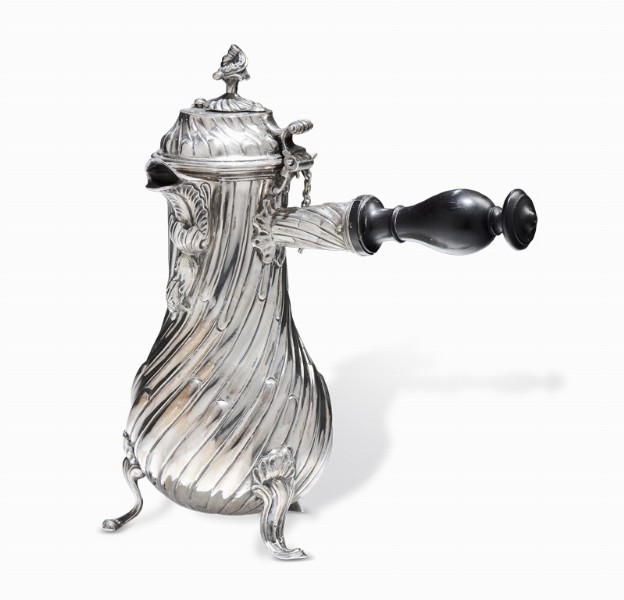Giovanni Raspini
Talking about ancient silvers today means to retrace part of the Italian and of the most important European courts history, especially in the period here considered, from the end of the 17th century and the early 19th century. It was the Europe of the Habsburgs, the Bourbons; the France of Louis XIV, the Kingdoms of Sicily and Sardinia under Savoy. The powerful Medici Family of the Grand Duchy of Tuscany gave way to the Lorraine Family and everyone looked with great attention at the rise in Prussia and Russia of Peter the Great, the consolidation of England, while Poland drew to a war of succession and Sweden to a melancholic decline. Simple historical quotations that help to understand an extremely “lively” historical period both in terms of geopolitics and culture, and during which it was possible to commission and produce profane silvers that, in addition to functionality, could be very original.
During the next auction “Italian and European Collector’s Silvers”, Cambi will sell a selection of extremely important pieces for expert and refined collectors. Sugar bowls, jugs, coffee pots, trays, but also bougie-boxes and candlesticks – made by well-known silversmiths – offer details of the “good taste” of the period and are published on the most important volumes on silvers and studied by the most relevant experts of the field as Alvar González-Palacios or Rosalia Francesca Margiotta. Many works have been exhibited in various exhibitions, starting with the first one dedicated to Italian silverware in 1956 held at the Museo Poldi Pezzoli in Milan.
I frequently say “beautiful things have a soul”; a testimony of it are rare pieces such as the beautiful Neapolitan centrepiece from the 1704, the extraordinary Roman coffee pot by the silversmith Gioacchino Belli with an ebony grip in the shape of a dog, the largest one known and documented, or the important Milan coffee pot from the second half of the 18th century which is on the cover of the monograph by Gianguido Sambonet Gli argenti milanesi, published by Longanesi in 1987.
The world of silvers is lively and can give strong emotions to those who have been dealing with it for a lifetime like I did. Studying and owning collector’s silver means to slowly build up knowledge. This is one of the reasons why I am a convinced supporter of the Laboratory of Goldsmith History and Technology of the University of Siena directed by Professor Paolo Torriti, who is also the wise keeper of the Archives of the silversmith Costantino Bulgari (1889–1973), donated a few years ago to the laboratory by the generous Anna Bulgari Calissoni.
The great importance of private collectors guarantees a serious preservation and promotion of these works; an example for all is the exhibition entitled “The Colonial Beverages. Silvers and Salons from the Italian 18th Century. Tea, Coffee, Chocolate” currently ongoing in the Basilica of San Francesco in Arezzo, the same one that houses the precious frescoes by Piero della Francesca and where, thanks to the contribution of the most important Italian and foreign collectors, it is possible to enjoy beautiful silvers.
Talking about ancient silvers today means to retrace part of the Italian and of the most important European courts history, especially in the period here considered, from the end of the 17th century and the early 19th century. It was the Europe of the Habsburgs, the Bourbons; the France of Louis XIV, the Kingdoms of Sicily and Sardinia under Savoy. The powerful Medici Family of the Grand Duchy of Tuscany gave way to the Lorraine Family and everyone looked with great attention at the rise in Prussia and Russia of Peter the Great, the consolidation of England, while Poland drew to a war of succession and Sweden to a melancholic decline. Simple historical quotations that help to understand an extremely “lively” historical period both in terms of geopolitics and culture, and during which it was possible to commission and produce profane silvers that, in addition to functionality, could be very original.
During the next auction “Italian and European Collector’s Silvers”, Cambi will sell a selection of extremely important pieces for expert and refined collectors. Sugar bowls, jugs, coffee pots, trays, but also bougie-boxes and candlesticks – made by well-known silversmiths – offer details of the “good taste” of the period and are published on the most important volumes on silvers and studied by the most relevant experts of the field as Alvar González-Palacios or Rosalia Francesca Margiotta. Many works have been exhibited in various exhibitions, starting with the first one dedicated to Italian silverware in 1956 held at the Museo Poldi Pezzoli in Milan.
I frequently say “beautiful things have a soul”; a testimony of it are rare pieces such as the beautiful Neapolitan centrepiece from the 1704, the extraordinary Roman coffee pot by the silversmith Gioacchino Belli with an ebony grip in the shape of a dog, the largest one known and documented, or the important Milan coffee pot from the second half of the 18th century which is on the cover of the monograph by Gianguido Sambonet Gli argenti milanesi, published by Longanesi in 1987.
The world of silvers is lively and can give strong emotions to those who have been dealing with it for a lifetime like I did. Studying and owning collector’s silver means to slowly build up knowledge. This is one of the reasons why I am a convinced supporter of the Laboratory of Goldsmith History and Technology of the University of Siena directed by Professor Paolo Torriti, who is also the wise keeper of the Archives of the silversmith Costantino Bulgari (1889–1973), donated a few years ago to the laboratory by the generous Anna Bulgari Calissoni.
The great importance of private collectors guarantees a serious preservation and promotion of these works; an example for all is the exhibition entitled “The Colonial Beverages. Silvers and Salons from the Italian 18th Century. Tea, Coffee, Chocolate” currently ongoing in the Basilica of San Francesco in Arezzo, the same one that houses the precious frescoes by Piero della Francesca and where, thanks to the contribution of the most important Italian and foreign collectors, it is possible to enjoy beautiful silvers.



